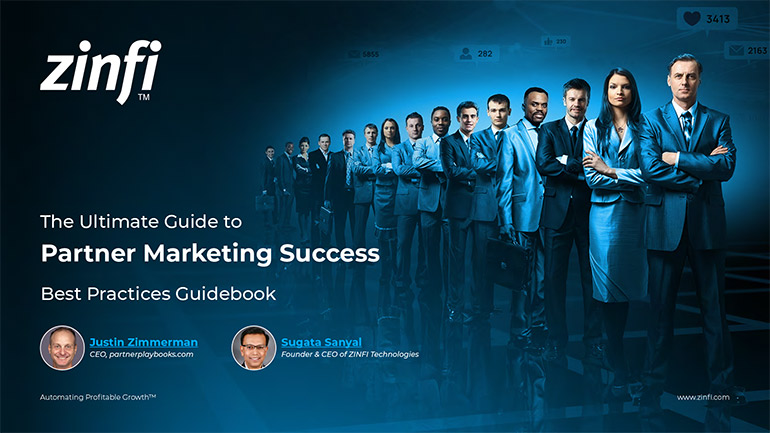Best Practices Articles

Channel Marketing Software – Why The Rapid Emergence?
As the world gets more and more digitized, and technology touches every aspect of our lives, one evolution that is consistent across all segments of lives is software-driven automation of work steps. Whether it’s in the connected home or connected workplace, intelligent manufacturing processes, financial management, and business automation are here to stay, and will only increase with time. Within this fundamental change, the most recent evolution has been in the area of automated channel marketing software.
So why is the category of& channel marketing software growing and why is it needed? And, who should consider deploying it? Before we answer these questions in detail, let’s look at the underlying factors that are driving the evolution of this new category.
Over the past two decades, the Internet has become not only a medium for content distribution but also a utility that - just like electricity, water, air conditioning, or heating - keeps an organization running. Today the Internet is a utility that allows businesses to distribute content and people to communicate, but it also has become a medium for distributing software that automates business workflow. Software that used to run on our desktops gradually moved to centralized servers and, over the past decade, outside the organization to the cloud. This trend accelerated due to the abundance of bandwidth and storage and the evolution of web services platforms that can run software in the cloud, eliminating the need to install programs onsite.
A brief summary of the evolution of enterprise automation software looks like this:
- Phase 1 (Broad Enterprise Automation)- The first category of enterprise automation software is in the area of Enterprise Resource Planning (ERP), which includes Customer Relationship Management (CRM), Manufacturing Resource Management, Financial Resource Management, etc. This is where companies like SAP, Microsoft, Oracle, and IBM have created technologies, and continue to dominate end-to-end automation and management of business processes. In this phase, we also saw the evolution of Business Intelligence software that pulls data together from multiple systems to give a holistic view of the enterprise, with the goal here of enabling data-driven management decision-making and resource allocation.
- Phase 2 (More Deeper and More Specialized Tools)- During the past decade, we have seen the evolution of marketing automation software designed for the mid-market and enterprise space from players like Eloqua (acquired by Oracle), Pardot and ExactTarget (both acquired by Salesforce.com), Marketo, Hubspot, Act-On Software and many more. Most of these organizations today boast multi-billion valuations representing the future potential of growth in their respective segments. There also has been innovation in small business marketing automation areas - driven by players like ConstantContact and Vertical Response. As a result, it is now accepted that when it comes to core business processes like sales, marketing, manufacturing, and finance, automation is critical not only to reduce cost, and increase repeatability and reproducibility, but also to create a competitive advantage against other players in the marketplace.
Amazon is first a software company, and secondarily a reseller of products and services. We have seen businesses like bookstores – for example Borders in the U.S. – going out of business, simply because they did not compete in the arena of digitized content and distribution of goods and services via Internet process automation. The same thing is happening with all companies that are not adopting digital sales and marketing processes using end-to-end automation, and the same logic applies to the recent evolution of automated channel marketing software. If you are selling direct, the chances are you have already automated your sales and marketing processes, or are in the process of doing so. Otherwise, you risk going out of business, just like old-school bookstores. However, if you are selling indirectly, through a channel, it’s possible that you may have not considered automation yet, simply because it is a new and rapidly evolving segment.
So what is the state of the channel marketing automation software industry today, and where is it going? Here is a brief summary.
- Channel marketing automation software today- There are thirty or more vendors - like ZINFI - who are turning over something in the range of $5-10 million a year in revenue, focused on various aspects of channel marketing automation software. Some providers target their offerings at specific technology segments and automation workflows related to the management of resellers, VARs, system integrators, or managed services Some channel marketing automation software vendors are in the business of automating vertical industry segments like a retail franchise, affiliate marketing, healthcare, insurance or real estate. However, all share broadly the same goal, which is to automate two or more tiers of marketing and sales processes via channel marketing automation software. This is something that older school direct marketing automation vendors do not do today.
- The future of channel marketing automation software- Just as standalone products have become features over time in all other automation sectors, it is clear that most of the sub-segments discussed above will be absorbed into a single segment of multi-tier marketing and sales automation for different vertical market This evolution represents the next phase of the channel marketing automation software segment, which we will discuss in a future article. How do we know it’s coming? Well, we have already experienced the evolution of Unified Partner Management that basically now comprises Partner Relationship Management and Partner Marketing Management. These two distinct workflows now can be unified under one software platform and provide true end-to-end visibility, scalability, and control to channel professionals.
Channel marketing automation software is at an exciting phase in its development. Even in its early days of evolution it already has produced significant cost savings through streamlining of process steps, elimination of wasted labor, and freeing up marketing and sales funds to invest in strategic growth areas. It will continue to do so on an even greater scale in the years to come.
Best Practices Guidebook
 The Ultimate Guide to Partner Marketing Success Best Practices
The Ultimate Guide to Partner Marketing Success Best PracticesDownload Guide
 How to Start and Scale Partner Ecosystems Best Practices
How to Start and Scale Partner Ecosystems Best PracticesDownload Guide
 The Evolution of PartnerOps: Past, Present & Future Best Practices
The Evolution of PartnerOps: Past, Present & Future Best PracticesDownload Guide
 Mastering Channel Sales: Strategies, Best Practices, and Growth Tactics for 2025
Mastering Channel Sales: Strategies, Best Practices, and Growth Tactics for 2025Download Guide
 Winning with Partner Advisory Councils: Best Practices for Partner Engagement & Growth
Winning with Partner Advisory Councils: Best Practices for Partner Engagement & GrowthDownload Guide
 The Future of Partner Ecosystems Best Practices
The Future of Partner Ecosystems Best PracticesDownload Guide
 The AI Revolution: How Technology and Talent are Shaping the Future
The AI Revolution: How Technology and Talent are Shaping the FutureDownload Guide
 Top 105 Partner Management Metrics that Matter Best Practices
Top 105 Partner Management Metrics that Matter Best PracticesDownload Guide
 Mastering PRM Integration Best Practices
Mastering PRM Integration Best PracticesDownload Guide
 Building a Sales Partner Portal with Salesforce Best Practices
Building a Sales Partner Portal with Salesforce Best PracticesDownload Guide
 Building and Managing Partner Ecosystems Best Practices
Building and Managing Partner Ecosystems Best PracticesDownload Guide
 Mastering Co-Marketing and Co-Selling Best Practices
Mastering Co-Marketing and Co-Selling Best PracticesDownload Guide
 Transforming Partner Ecosystems Best Practices
Transforming Partner Ecosystems Best PracticesDownload Guide
 Mastering Partner Ecosystems Best Practices
Mastering Partner Ecosystems Best PracticesDownload Guide
 Mastering Partner Onboarding Best Practices
Mastering Partner Onboarding Best PracticesDownload Guide
 Partner Ecosystem Management Best Practices
Partner Ecosystem Management Best PracticesDownload Guide
 B2B Marketing in the Age of Intelligence Best Practices
B2B Marketing in the Age of Intelligence Best PracticesDownload Guide
 Multi-Partner Co-Selling Best Practices
Multi-Partner Co-Selling Best PracticesDownload Guide







